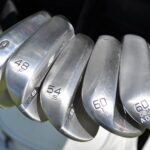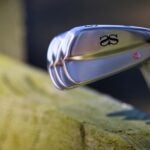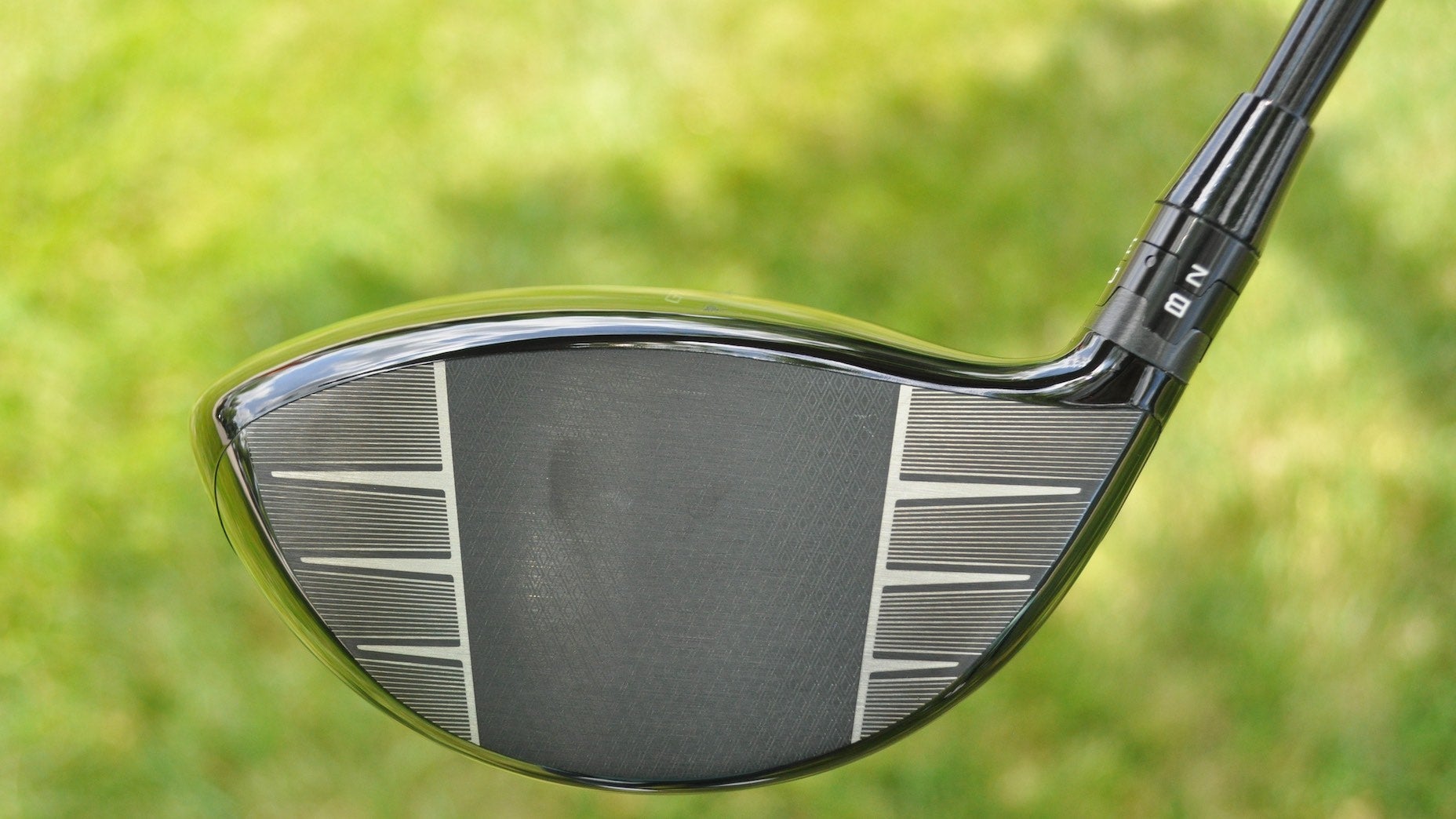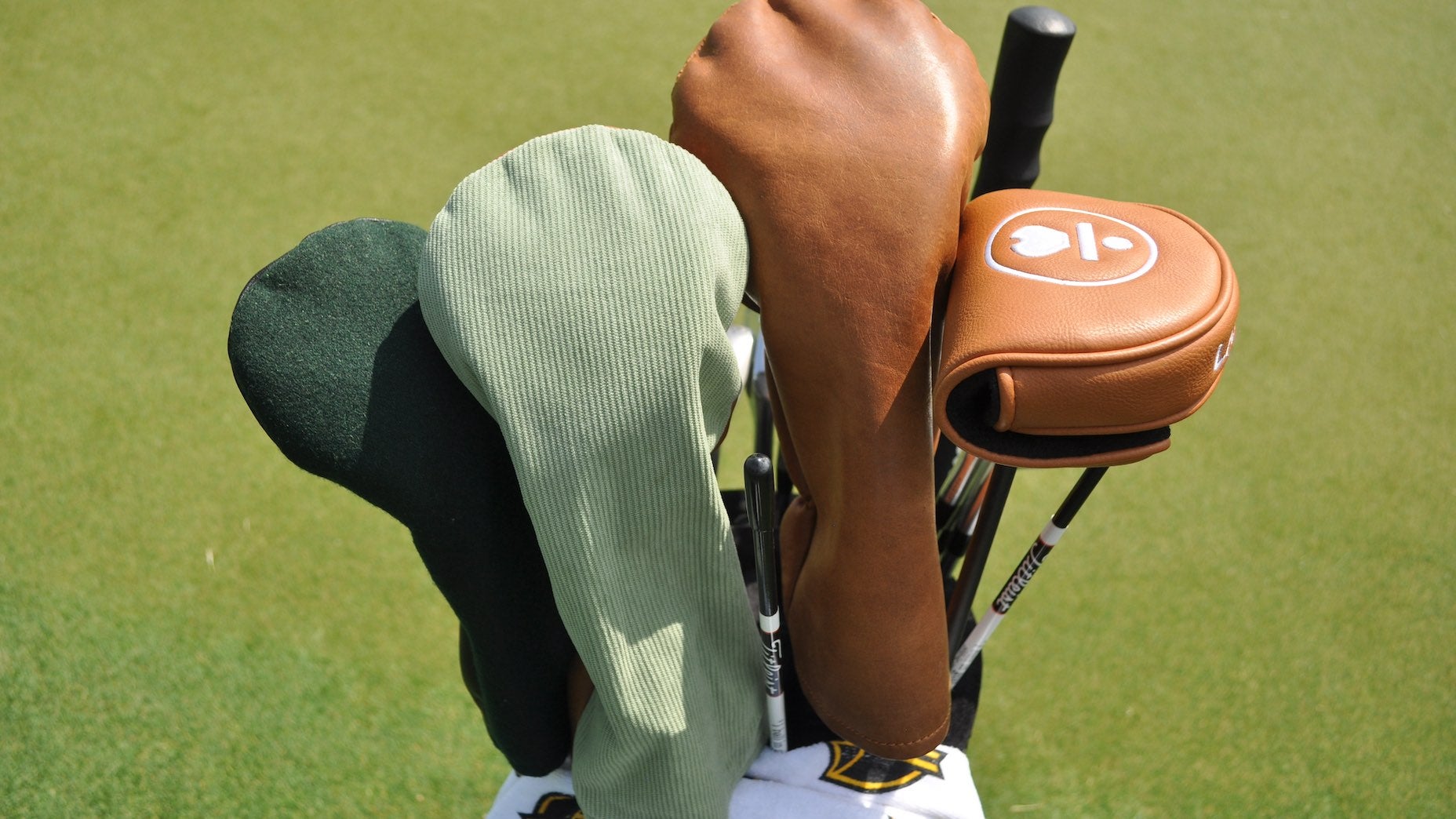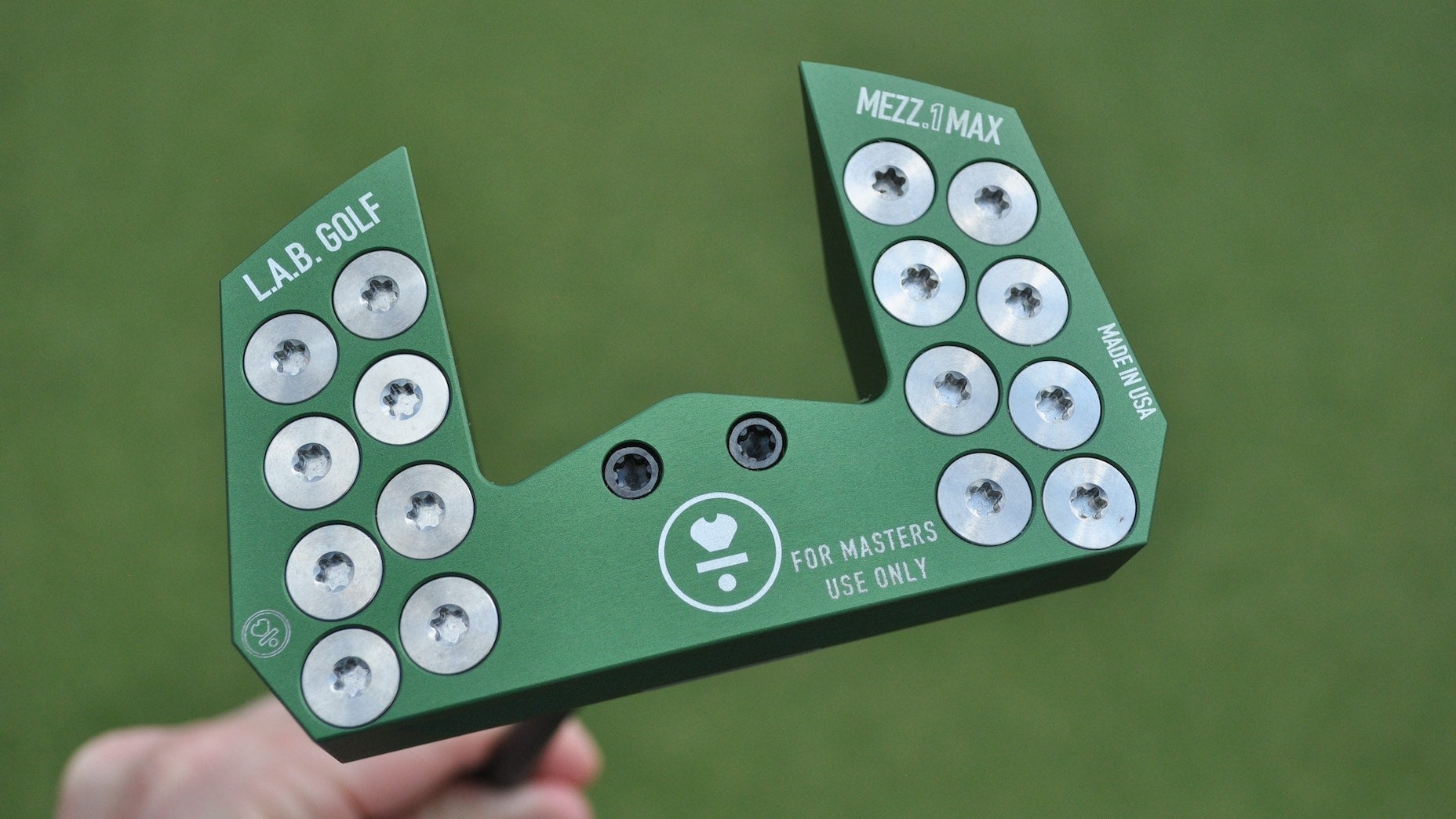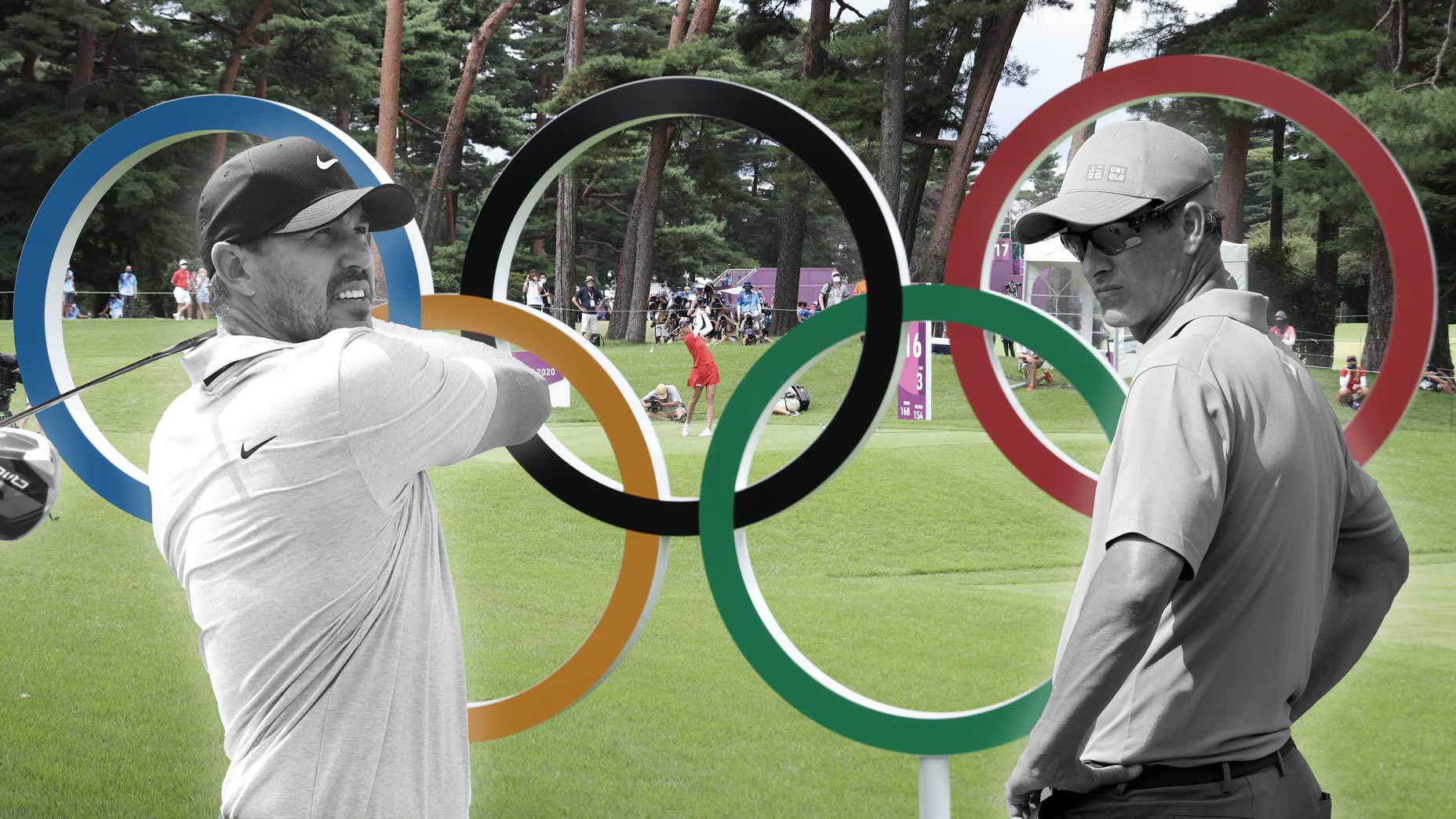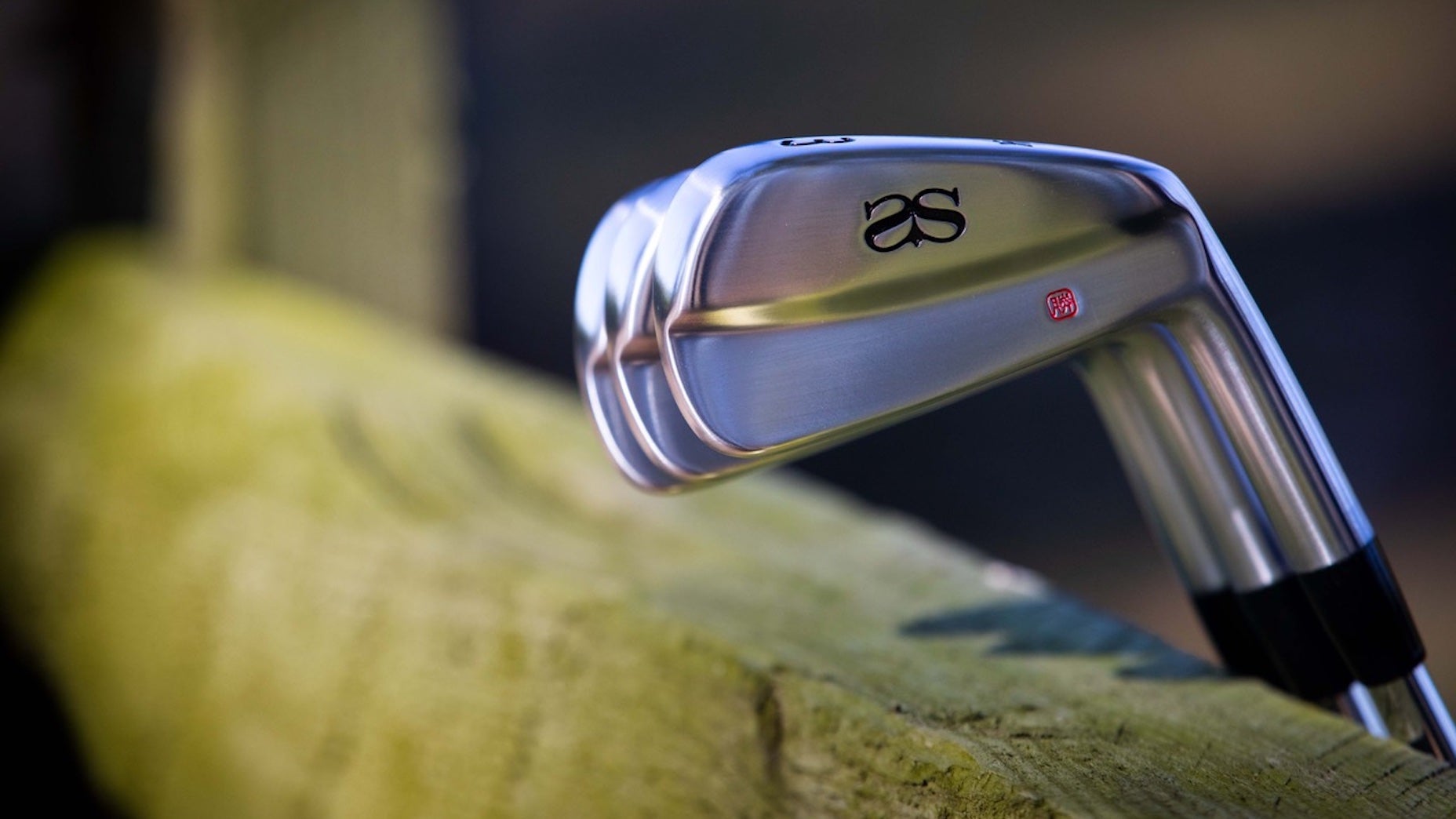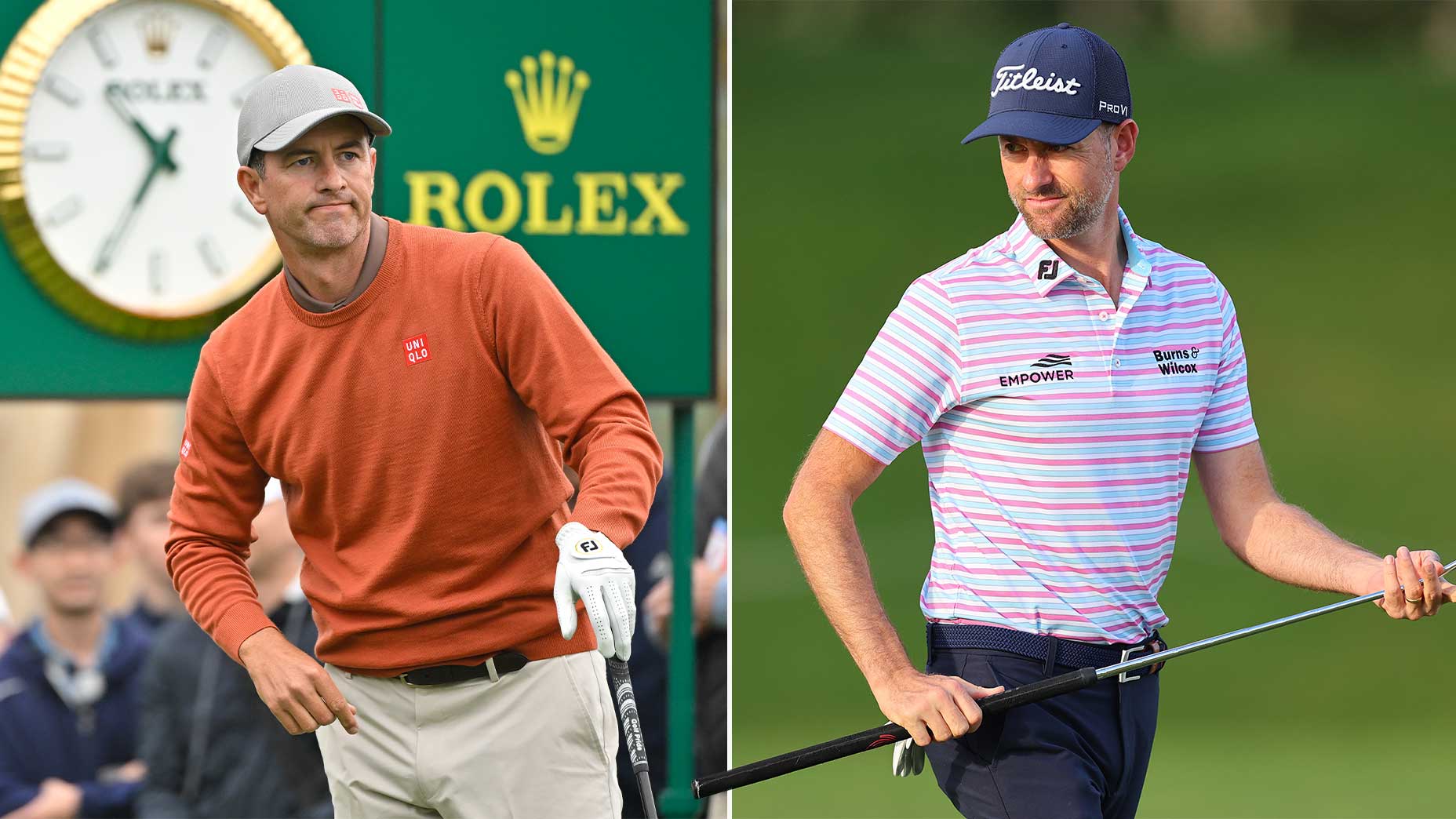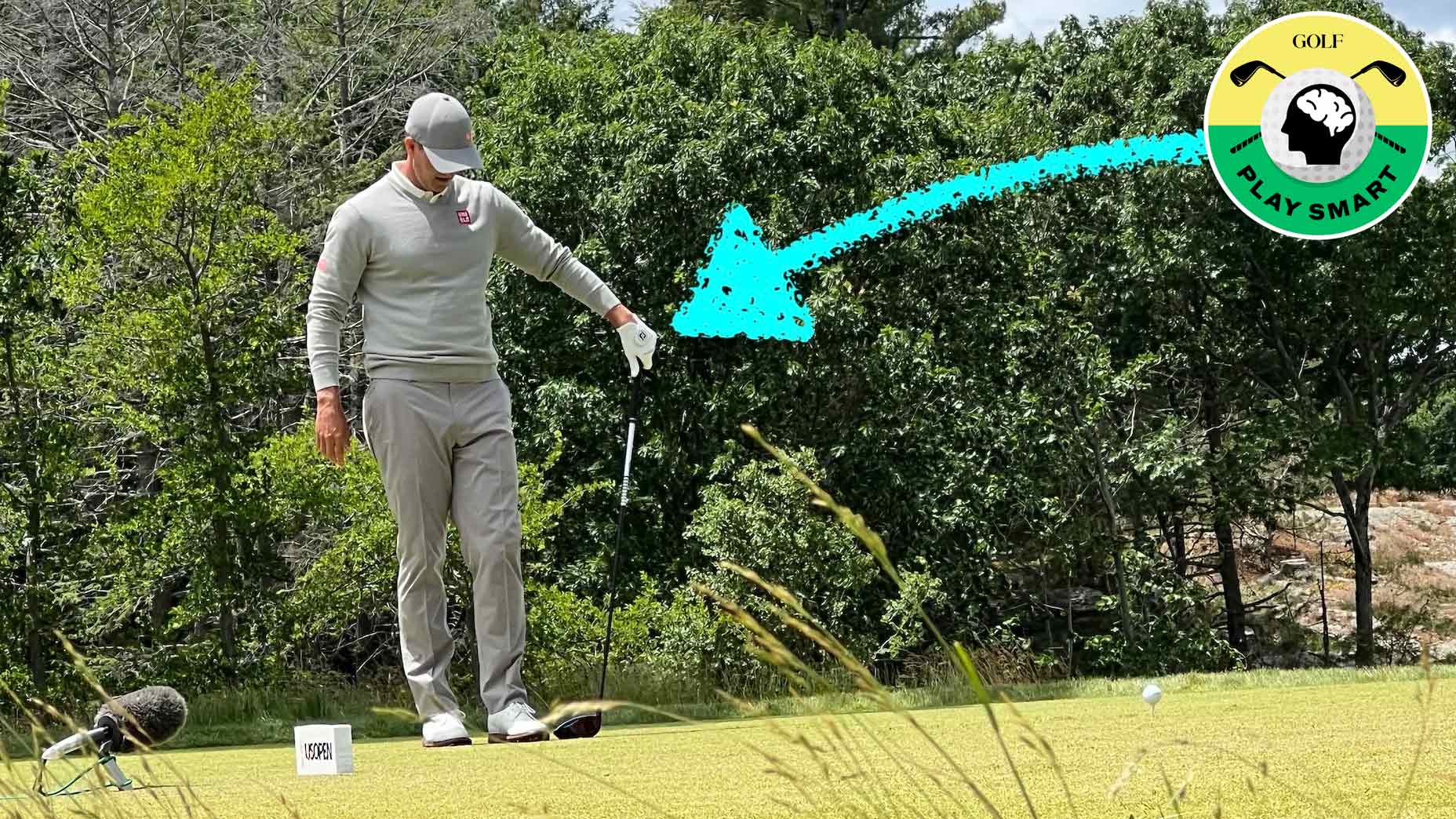Q&A: Adam Scott explains his ‘adapt or die’ approach to equipment
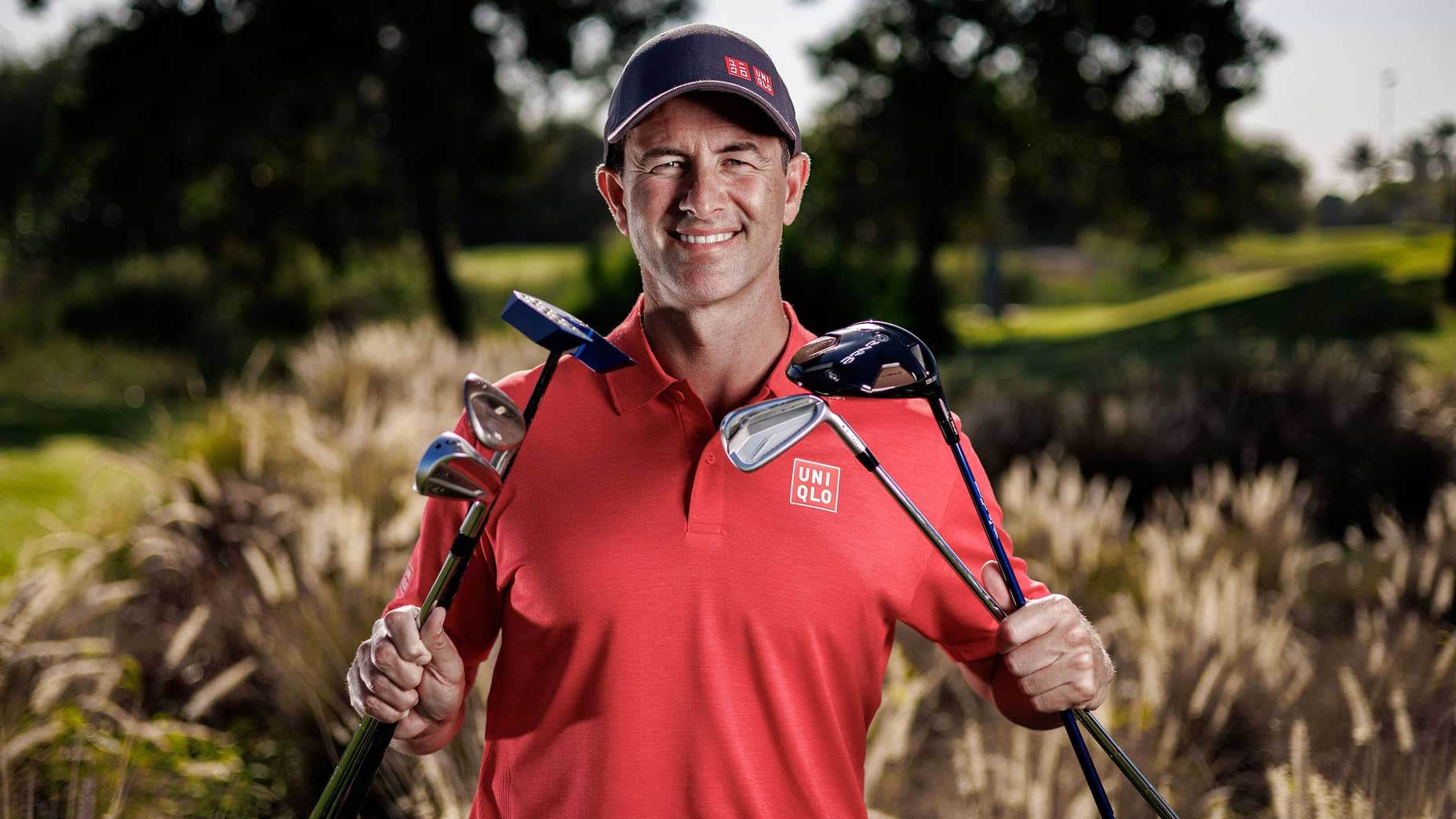
Adam Scott has as varied a set of clubs as anyone on Tour.
Oisin Keniry
Somehow, on a Tour of about 250 members, Adam Scott’s golf bag sticks out. Not the color of it — though the dark green and yellow iteration will look nice come April — nor any of the sponsors on it. Rather, the mishmash of clubs inside. Last month, when he kicked off his 2024 year at the Dubai Desert Classic, Scott had five different companies represented within — Ping, Srixon, Vokey, TaylorMade and a L.A.B. putter. That doesn’t even include the others brands that came and went from his bag in 2023, a turning point year for the Aussie when it came to his gear.
About 10 months ago, Scott underwent an overhaul of, well, just about everything. The result is the most modernized version of Scott we’ve ever seen, and early returns have been brilliant with four top-20s to start the year. All of which is to say, when we sat down to talk all things equipment, and where Scott wants to take his journey in 2024, we caught him at a fascinating time.
SZ: You’ve got five different companies in the bag. You’re a free agent, but when people say free agent they think, ‘Oh, I can sign with anybody.’ But you’re not exactly looking to sign with anybody. What pushed you into that mindset?
AS: I think I have to start this by saying Titleist is the only equipment company I’ve ever had a deal with. And still have a deal with. I’m still a ball-shoe-glove guy. So I want to recognize and appreciate everything they did for me. Wally Uihlein — when I turned pro — put me on staff. I had no card. But he really believed in me. I’m really proud that I was an ambassador for Titleist and FootJoy for 24 years in the end. That support throughout most of my career, it was really important. I just preface all my comments with that because I feel a real strong loyalty to that company. But I think so much in equipment has changed in my career. I mean, I turned pro with a wound golf ball. It was a Professional90 I was playing. So the ProV1 didn’t even exist at that point.
So much has changed and I’ve changed obviously a lot. This was time where the support wasn’t as necessary, because I feel I’ve learned about equipment and I know my own game, and I could see the areas I was struggling in, and I felt like I could have a little more freedom. And I think curiosity can get the better of you. You know how it goes. Rory McIlroy — I think it was last year at the Match Play. He had a new shaft and he drives it on the 18th green. Everyone goes, ‘I’ve got to try that shaft.’ It’s not Rory’s great. The shaft’s great. [Laughs] And I’m playing that shaft today. So anyway, there’s a curiosity thing and it was just a timing thing.
SZ: Are you’re more curious now than you were 10 years ago, or 20 years ago?
AS: Yeah, I think so. Because I’ve probably gone 180-degrees on this to where the first five years of my career, I didn’t change anything. I looked at Tiger, he never changed much. He kept same stuff in there. I’ll do what Tiger’s doing. I was one of the last guys to go to a graphite-shafted driver in 2005. I think Tiger was after me, maybe Sergio, too. The three of us were sticking with it.
You have to adapt and I feel more than ever — unfortunately because of my age and the way the game has moved to where, with all the data and all the info being provided to younger players, they’re getting years of experience right out of the gate. My experience counts for less today. When I watch the best young guys play, they’ve grown up with this ball. They learned how to play with this ball. They learned how to play with a different kind of club than I’ve ever used. They’ve learned how to play with a huge driver and they play the game very different. And I think for me it’s kind of adapt or die at this point. That wasn’t the decision to be a free agent. But that was definitely a decision last March, after the Bay Hill tournament. I’m like, ‘I gotta get over playing golf the way Adam has always played golf. And move with the times a little bit.’
SZ: Was there a specific thing that told you it was time?
AS: It was just really the first run of events last year, and it wasn’t one guy in particular, it was everyone I played with. I’m not playing like they are, and I think I’m better than a lot of these guys. But I’m not getting the results. Some of it was course management. I started working with Edoardo Molinari a little bit before last year. That’s awesome, but to stand on a tee and aim a driver in the rough and accept that because that’s where the best score’s gonna come from, that’s hard because I learned you hit a 3-iron in the fairway, you play smart. But playing smart today is different. So it was all of that kind of stuff. Until last March I was playing a very old model ProV1. It was essentially slower and spinnier and I would say I was disadvantaging or handicapping myself against everybody that wasn’t playing that ball. I think I was the only one. That was the start point.
SZ: Was there a moment in your life when you began to establish this deeper interest in equipment?
AS: You know, it’s a fairly interesting story. My dad was actually a club manufacturer. He’s an unbelievable gearhead. You can do a whole other interview with him on that. But when I was a kid, he made wooden plugs for wooden drivers. Not wooden-shafted, but he had a set of woods called EZ Woods. He trying to be an innovator in that stuff, making cork-filled heads and different kinds of sole plates and different kinds of designs. It was the persimmon era still, in the 80s or early 90s. So I was always around the workshop, and I learned how to build a club really early and bind the club. Or the whipping — I don’t know what you call it in America. We called it binding in Australia.
So I’ve always been terribly interested in gear. Whenever a new Scotty Cameron putter came out, I mean, you’re just fawning over this stuff in the pro shop. I’m a golf nerd, no doubt. I love it all.
SZ: When I look at your bag see all these different brands, it looks like years of work, or years of thought, or months and months of testing. Is that what you see when you look at it?
AS: I think I’m open-minded, generally, and I think that started with the putting. When I switched to putt with a broomstick putter, just to make that switch there’s got to be some open-mindedness about this. Because I putted with a Newport 2-style putter forever. That’s pretty. And that’s what Tiger putted with. Then I switched to what some people might call the ugliest form of putting — with a long putter. And it was anchored back then, too. So I think when I look at this bag, I’m open minded to try stuff. To give it a try if it’s going to produce a good result. Because that’s ultimately what I did with the putter. And then I got to work with Scotty Cameron to create a more stable putter in a broomstick because, you know, not many people spend a lot of time building broomstick putters.
SZ: There’s more money elsewhere in putters.
AS: Right. But I had the access to Scotty Cameron to do that. We built this better putter and I won the Masters with it. That’s where I think the most serious side of looking at clubs and details and the engineering behind it came in. I’m no expert at all, but I understand some basic principles of wanting something helping you.
SZ: What does testing look like for you?
AS: It’s probably a bit too random. Because testing takes a long time, actually. You know, you hit a few. Oh, these feel good. Let’s get some numbers. Then we’ve got to get it on the course. And then there’s getting it on the course to, Okay, this is actually really good. The only way to know is in a tournament. So there’s a long process to get into that.

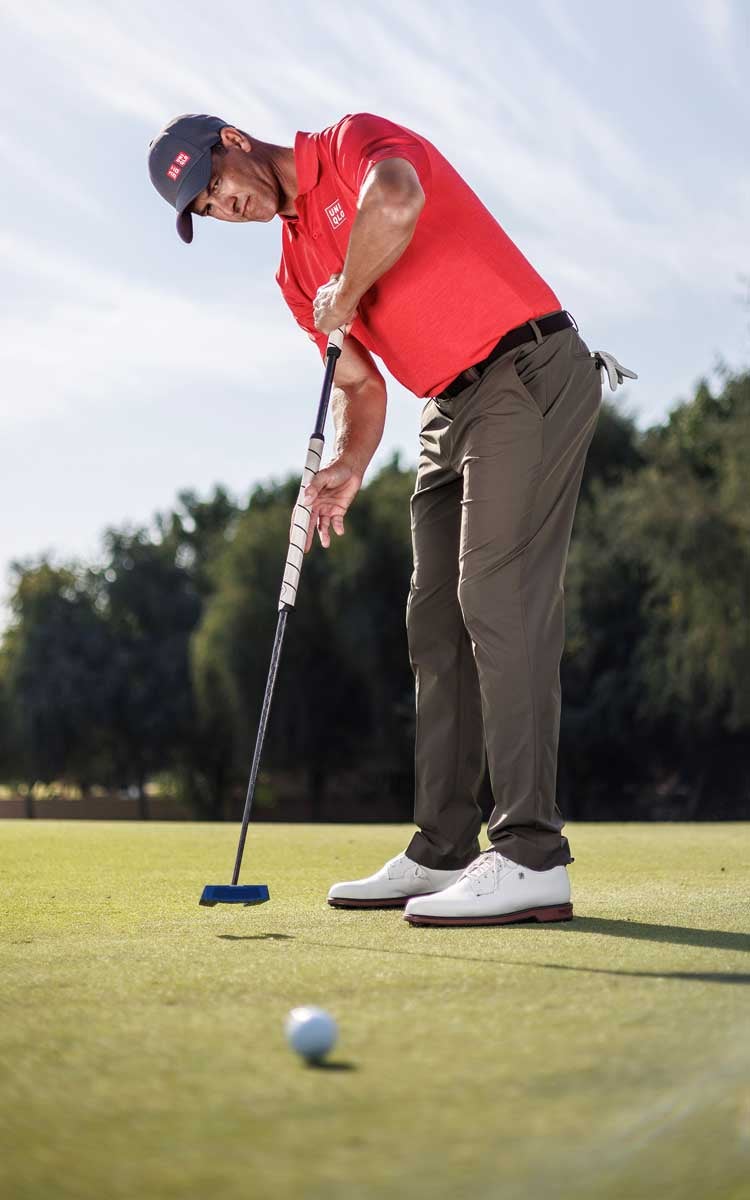
SZ: Has there been a moment in your career where you were all in on something and then you tried it in a tournament and it wasn’t there?
AS: You know, Autoflex shafts. It’s such a crazy thing. But I’m like, ‘Okay, let’s have a look at this.’ I did some testing with it at Titleist in Oceanside and I got my fastest speeds ever out of it. ‘Okay, let’s play it at the Farmers Insurance Open and see what happens.’ I drove it great that week. I was playing with Jon Rahm and he was like, ‘What is going on here? Why are you hitting it so far?’
I played it for a few weeks and I was all in on it, but I had one or two bad rounds of driving it. It’s probably a very specialist piece of equipment where it works in some places and won’t in others because we play a different kind of golf course all the time. I think the technology behind it is really fascinating, and I don’t know if they can advance it — like the AutoFlex 2.0 or 3.0 is going to be the one that really nails it — but I think that was one where it’s like ‘This was pretty cool,’ but I had to kill it.
SZ: How about Miura? You went to the plant in Japan, got your hands dirty. What was that experience like?
AS: It was amazing. It was a great opportunity for me, as someone who’s been kind of known as a ballstriker, to build my own set of clubs with maybe the greatest clubmaker out there. And to have him hand-finish a set of irons and then to produce a limited run of these irons — they’re so pretty.
And I played them for a year, but it was in this period where it was kind of becoming clear to me that week in and week out there may be a different iron to look at. I have such a great relationship with them and huge respect. There may be another special set that I’m still testing. They’re a very different shape head. They’re kind of a better balanced blade. But I’ve kind of moved my mind out of a full set of blades. Certainly at the top end of the bag. Now I’m still talking with Miura about maybe creating that kind of combination set or even a player’s set of Tour cavity-back irons. You know, Miuras are the best metal. They feel great, they’re balanced so well. But that club is probably aimed at a mid-handicapper. So just bringing that kind of Tour CB model is maybe something we can do in the future.
Miura CB-302 QPQ Custom Irons
$410
View Product
SZ: The woods in your bag — each week you’re deciding between 7-wood and 5-wood. I don’t think that is a story that a lot of people of my level think exists on the Tour level.
AS: Well, I rarely even carry a 3-wood ever. I’ve got the mini driver. I’m certainly not pioneering anything. I played with Dustin Johnson at the Houston Open, the week before he won the Covid Masters, and he had a 7-wood in the bag. He was moving it 240 yards out of the rough, up near a par-5 green, and I’m hacking a 7-iron out from the same spot.
So I started hitting a Titleist 7-wood. Seven-woods are so good now compared to what a 7-wood was when I first turned pro. They’re so consistently tight now in dispersion, distance-wise and accuracy. So when I tested the TaylorMade Stealth ones, it was just an unbelievable weapon to have because it goes about 250 and it’s really tight. So it’s amazing into par-5s.
SZ: I’m now curious if your curiosity extends to things not in the golf world. Are you a curious person by nature?
AS: Certain things I like to dig a little bit deeper on, yeah. I do definitely have a passion for watches and I’ve been a Rolex ambassador forever. I like to know what’s going on in the watch world. It’s things I get involved with, I like to know stuff about. I don’t want to be ignorant.
SZ: As a non-watch guy myself, what is something I don’t know about watches that you know intimately?
AS: I think the first thing is a Rolex is an expensive watch, but I think it’s very good value. Once you know how they’re made and you understand how this mechanism is working inside, automatically, not powered by anything other than an oscillating weight, some springs and some tiny pieces of metal and the tiniest screws you’ve ever seen, it’s pretty unbelievable that it just keeps running. I’ve seen so many times when I’ve toured the factory with some guests and friends and they just can’t believe what goes into this and they’re like, ‘Wow I think that watch is good value now.’
SZ: I don’t think people give you enough credit for becoming a better putter in recent years. Part of it is putting differently. Part of it is the equipment are working with now, right? You’ve become a little bit of a trendsetter for people like Lucas Glover or Will Zalatoris.
AS: I mean some things are coincidence and some things you kind of can make happen. And I’m sure my putting was a bit of both. It’s a crazy story how I got to know L.A.B. Putters, through Kelly Slater. I was playing the Pebble Beach Pro-Am and he was in my group. He rolled it better than anyone in our group, pros or amateurs. I’m like, This can’t be right.
He’s incredibly talented. He’s a good golfer. But he was out-rolling me every day on the poa, which can be challenging. I’m like, Let me have a look into this. So I met Sam [Hahn] the next week in LA, and I got a putter. That was in February, and two months later I was leading the Masters after two rounds. I didn’t putt particularly well on the weekend. I didn’t play particularly well either, and I kind of went away from it after that. You know, trial and error kind of stuff. But I really was into Sam and his team and the way he did stuff. He was really into amusing my curiosity. So even though I was putting with other stuff, for some time I was testing a lot of his stuff for him, in short and long putters.
When the MEZZ.1 putter came, I’m like, Okay, now we’ve got to get serious. Let’s do some serious testing. I gave him a lot of feedback on it. And that’s how the MEZZ.1 Max came about, with a slightly larger head. And when he got the long shaft in that — it was actually here in Dubai a couple of years ago — it was a no brainer for me. And, you know, a couple small refinements since that raw prototype head…it’s a hell of a putter. There aren’t many companies investing time in broomstick putting. There’s no doubt L.A.B. is the leader in that. And the results at the highest level show that. I’m sure they’re selling a lot of broomsticks. I think the MEZZ is, overall, one of the best putters I’ve ever putted with, if not the best.
L.A.B. Golf MEZZ.1
$449
View Product
SZ: When it gets reported that Lucas Glover goes to them and says, I want Adam Scott’s putter, I want those specs…What does that make you think?
AS: It’s like when Rory hits a great drive and you’re like, ‘Oh, he put the new shaft in. I’ve got to try the shaft.’ It’s the same thing. Obviously, I’m doing something good with it. And I’m not oblivious to it. So many people over the last three or four years have talked to me about my putting. The putter is one piece of that. And it’s a big piece of that. But a lot of people have noticed how consistently well I putt and how much the ball rolls at the hole. To compliment a really good putter, I have a really good routine to make sure I’m putting consistently well all the time.
But back to where you started, I can’t argue with you. Putting has been for most of my career the most temperamental part of my game. I was streaky. Even the year before I switched to a long putter, which was like 2010, I won a couple of events, and putted great. But then the next week, I didn’t know what was going to show up. The frustration level was so high, I had to learn something new. I wanted a clean canvass.
SZ: I can’t imagine how frustrating that could be — to at one point be a Masters champion, No. 1 player in the world, win back-to-back weeks — to know that that part of your game might be there and might not.
AS: Yeah, and I think once I went to the long putter, the consistency was instantly there. It was never terrible. It may not have always been great. But it’s gotten so much better the last few years.
But one thing I always like pointing out to people was Strokes Gained didn’t arrive until 2007. And if you’re the Strokes Gained: Putting leader, you’re the pinnacle. But they had the data to back-date Strokes Gained to 2004. And I was Strokes Gained: Putting leader in 2004. Tiger was second. But the stats we had at the time were putts per round and putts per green in regulation. I ranked like 75th and 80th on those two stats. But if it was Strokes Gained I was number one. I played good that year — I won the Players and I won another tournament on Tour — and I left that year thinking I’m pretty much an average putter. That’s what I was told. You know, ‘If you putt a little better Adam you’ll be really good.’ I was the best putter on Tour that year. That was interesting to me because that feedback could have been so different. I could have walked into ’05 pretty tall, feeling like I am Ben Crenshaw.
Ed. note: Scott is close with that memory. But Woods finished 2004 No. 1 in SG: Putting. Scott was No. 2.
More Adam Scott stories
SZ: A few years ago, I asked Dustin Johnson if he’d considered retirement much. He was like, Oh yeah, 45 years old, I’m done. I’m not asking you if you’ve thought about retirement, but have you thought about what you could do in your 40s and how much pursuit there will be, because it seems like you have a lot of inspiration keep going.
AS: At this point, I know a lot of stuff and I know myself pretty well. And I don’t think I could retire. I don’t think I’ll ever stop playing golf. But I could see a day where I don’t have a Tour card and I just kind of hopefully can play a few events here and there. I can play the Masters forever. If I have the courage to kind of not do the norm in my 40s. I think I can have better results than if I just stayed on the grind. There’s a certain grind of the Tour because you’ve got to find a position, you’ve got to find a ranking, you’ve got to do all this stuff. And I’ve done that. A long time. That’s not motivating for me as much as getting to the event I want to get to. I’ve played hundreds of events. There’s got to be that freshness of mind. That’s the biggest thing for me. Physically I’m great, but to stay fresh in my mind for golf is the thing I think I manage most throughout the year.
SZ: If you are able to find, let’s say, magic, in your putting from where are you maybe five or six years ago. And Lucas Glover is able to find some magic in his putting from where he was even 18 months ago. What does that say about putting in specific and golf at large?
AS: Well it’s a crazy, crazy game. But here’s what I’ll say about broomstick putting. You know, Lucas was obviously struggling. I’ve been there, struggling. I know a lot of other guys have struggled. But when you change so drastically like this, the freedom that instantly exists in your putting stroke physically, and in your brain mentally — the trickle down effect to every other part of your game, to your iron play, to knock it on the green, to your chipping — to not have to chip it to six inches to make sure you’re gonna hole the putt. The trickle down effect is massive with that.
The big thing to me that I still remember clearly is in golf, the club does all the work for you when it’s good. When you’re swinging good the ball is just getting in the way of this club swinging. The club does all the work. When a broomstick putter swings, that head is swinging so free. It’s a big difference than when you’re struggling with the short ones and that putter head is not moving freely. That’s a revelation when you’ve been in a bad place and you pick this up and you like, ‘Hang on. This is weird. But it feels good.’ Now the putter is doing all the work for you.
SZ: There are not enough sporting endeavors like putting, where it’s Pass-Fail. It makes it this really hard thing to appreciate if you’re not struggling to understand what it’s like to struggle.
AS: Yeah and I think the interesting thing with the broomstick you just talked about — that style has been better for me since the anchor ban. Actually floating it is better. I think there’s a bit more freedom actually in the stroke on the long putts. I think it’s quite easy to control the short putts anyway. Your hands are not wandering over the place. But on the long putts — it was 49 inches, my anchored putter — on long putts, you almost had to get out the way. And there’s just a little bit more freedom. And it’s a little easier to control the club because now yeah it’s four inches shorter.
SZ: Do you think Keegan [Bradley] and Webb [Simpson] do you think they agree with you on that?
AS: They were in the belly style. Webb struggled initially but he had some great results afterwards. It definitely had an effect on us. It was not just you’ve got to change this putting style that you’ve spent however many years and hours getting really good, it was people yelling Cheat to you for two years leading up to it. Hey, we’re in professional sport and you’ve got to expect some s—t, but it wasn’t a nice position to be put in for a couple years, I have to say that.
SZ: When you look back on your career right now, do you think you’ve underachieved? Overachieved?
AS: It’s tough. It’s tough to give definitive answers while I’m still playing. I feel like I don’t want to sell myself short. I like looking at the positives. I haven’t achieved every goal I set out to. So personally, you know, you could say I’ve underachieved, but that doesn’t mean I’m not going to. I’ve won. some great events that were goals of mine. Like the players, I was the youngest guy at the time to win it. Winning the Tour Championship in ’06. But it was the last Tour Championship before the Fedex Cup. For guys who weren’t around, it was a really big deal. Obviously the Masters and some World Golf Championships — half of these events I’ve just named have gone away. That’s how it goes. But you know I dreamt as a kid of being a multiple major winner. And I still think I can be. And that’s really what motivates me to keep going.
SZ: Alright then, let’s look forward. If 2024 is a good year and Adam Scott’s golfing career, what do you think it looks like?
AS: You know, I’d really like to win a couple of tournaments. It’s the only thing that I really want to do. I’d like to win and show my kids I can win some trophies. They don’t understand why I don’t bring the trophy home ever.




